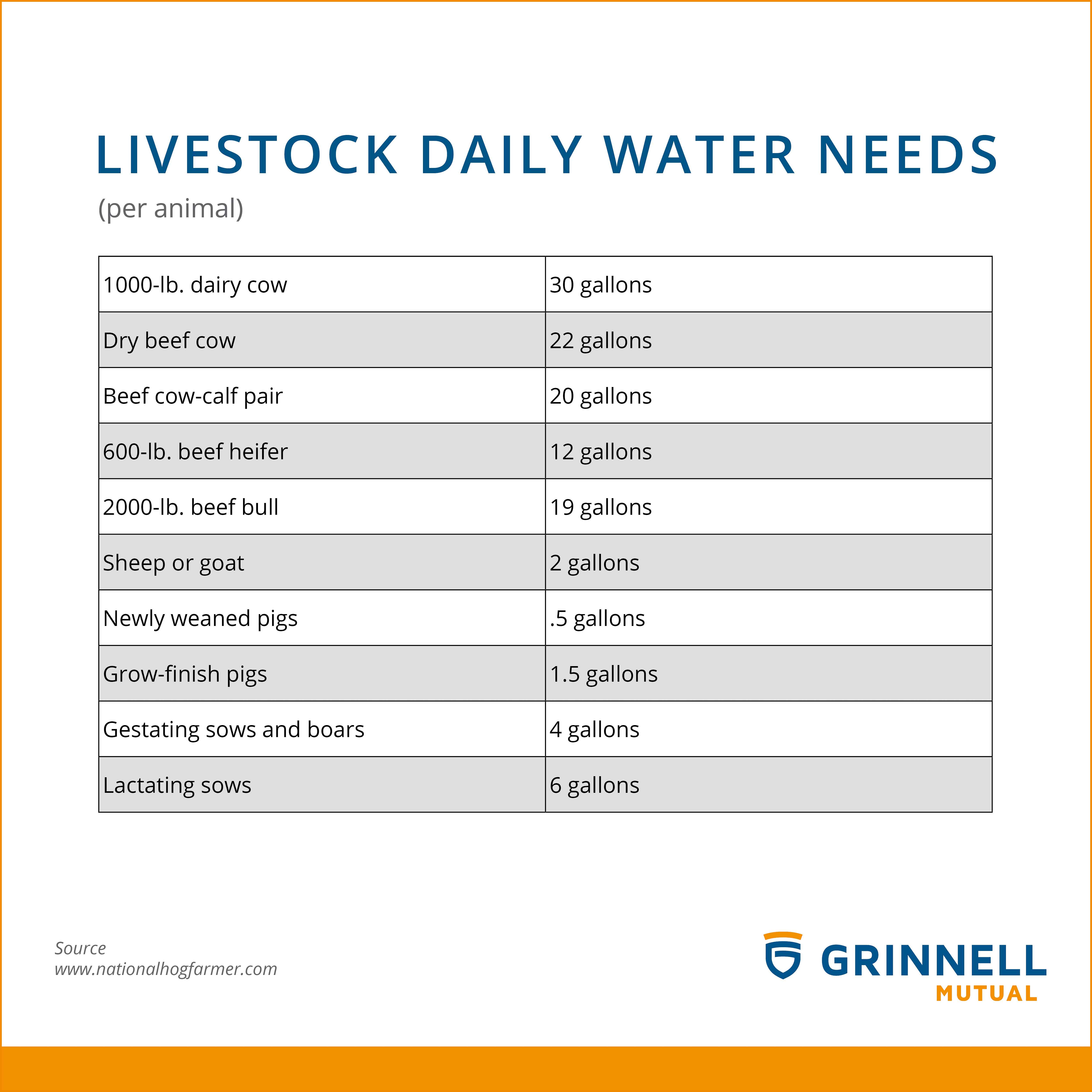AVOID LIVESTOCK HEAT STRESS
Put these tips into practice to keep your livestock comfortably cool and safe from the effects of heat stress.
Make shade available
Provide rest spots in buildings, under trees, and other shady places. Build your shade structures at least 8 feet tall to allow air to flow through. Orient the shade according to your goals: If you want the ground to remain cooler, erect the shade going from east to west, and if you want the ground to dry because of mud, erect it going from north to south.
Offer cool water for livestock
The key to keeping your livestock comfortable could be as simple as where you place your water tank. Shade the tank or place it under an already shaded area to keep the water as cool as possible. And make sure you provide plenty of water for the animals in your care
Learn the water needs of the livestock in your care.

Work livestock at dawn and dusk
Movement and digestion generate internal heat. So, work livestock in cooler parts of the day if possible. Keep in mind that the hottest part of the day may not be when your livestock’s core body temperature peaks. For example, Iowa State University explains that cattle’s core body temperature peaks two hours after experiencing intense heat and it takes six hours for the heat load to dissipate.
Keep the air moving
A little bit of air movement on a very hot day can work wonders. Use fans to make those still, miserable days more manageable for livestock .
Use sprinklers with care
If you decide to use sprinklers for your livestock, keep in mind that no matter how refreshing it may feel to you during the heat, for some livestock it may be dangerous. Use sprinklers before your livestock endure extreme heat, not during, as animals already in heat stress may die from the thermal shock. Use them intermittently to avoid building up humidity and mud. Once you start using sprinklers for your livestock, you must keep using it until the dangerous heat is past.
The information included here was obtained from sources believed to be reliable, however Grinnell Mutual Reinsurance Company and its employees make no guarantee of results and assume no liability in connection with any training, materials, suggestions, or information provided. It is the user’s responsibility to confirm compliance with any applicable local, state, or federal regulations. Information obtained from or via Grinnell Mutual Reinsurance Company should not be used as the basis for legal advice or other advice, but should be confirmed with alternative sources.
Source: U.S. Department of Agriculture
5/2023